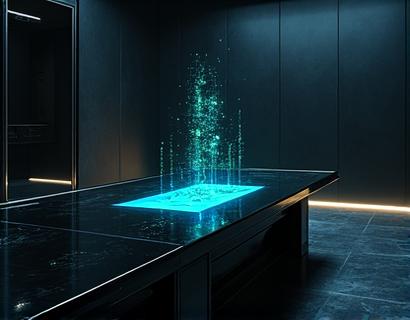Transforming Visual Creations with Intuitive Online Design Tools
In the digital age, the ability to create compelling visual content is more crucial than ever. Whether you're a seasoned graphic designer or a content creator just starting out, having access to intuitive and powerful online design tools can significantly enhance your workflow and elevate your visual storytelling. This article delves into the world of effortless online graphic design, exploring how modern tools are making it easier than ever to produce stunning graphics, social media content, and marketing materials with minimal effort and maximum impact.
The traditional graphic design process often involved complex software, steep learning curves, and extensive time investments. However, the emergence of user-friendly online platforms has democratized design, making it accessible to a broader audience. These platforms offer a range of features that cater to both beginners and experts, ensuring that everyone can create professional-looking visuals without the need for extensive design knowledge.
Intuitive Design Interface
One of the key advantages of modern online design tools is their intuitive interfaces. These platforms are designed with the user in mind, providing a seamless and straightforward experience. The drag-and-drop functionality, combined with a well-organized menu system, allows users to navigate the tool with ease. This intuitive design reduces the learning curve, enabling users to focus on creativity rather than struggling with complex software.
The interface is typically clean and uncluttered, with clearly labeled tools and options. This clarity helps users quickly find what they need, whether they are adding text, selecting colors, or inserting images. The simplicity of the interface means that even those with minimal design experience can produce high-quality results in a short amount of time.
Customizable Templates
Another significant feature of these online design tools is the availability of customizable templates. Templates serve as a starting point, providing a structured framework that can be easily modified to suit specific needs. This is particularly beneficial for those who may not have the time or expertise to create a design from scratch.
The templates offered by these platforms are diverse and versatile, covering a wide range of applications such as social media posts, blog headers, presentation slides, and more. Users can choose a template that aligns with their project requirements and then customize it by changing colors, fonts, and layouts. This flexibility ensures that the final product is unique and aligns with the brand's identity.
Rich Library of Design Elements
To further enhance the design process, these online tools come equipped with a rich library of design elements. This library includes a vast array of icons, illustrations, and graphics that can be easily integrated into projects. The availability of high-quality, ready-to-use elements saves time and effort, allowing users to focus on the creative aspects of their design.
The design elements are curated to be versatile and professionally crafted, ensuring that they complement any design project. Users can search for specific elements using keywords or browse through categories to find what they need. The ability to preview elements in real-time within the design canvas helps in making quick decisions and adjustments, streamlining the design process.
Collaboration and Sharing Features
Collaboration is a critical aspect of modern content creation, and online design tools have incorporated features to facilitate this. These platforms often include collaboration tools that allow multiple users to work on the same project simultaneously. This feature is particularly useful for teams or when working with clients, as it ensures that everyone is on the same page and can provide feedback in real-time.
Sharing capabilities are also a key feature, enabling users to export their designs in various formats and share them directly from the platform. Whether you need to upload a design to social media, send it to a client, or integrate it into a website, these tools make the process seamless. The ability to share directly from the platform saves time and ensures that the final output is presented in the best possible format.
Responsive Design and Cross-Platform Compatibility
In today's multi-device world, ensuring that designs look great on any screen is essential. Online design tools recognize this need and provide responsive design options that adapt to different screen sizes and resolutions. This means that the designs created are optimized for desktops, tablets, and mobile devices, ensuring consistency across all platforms.
Cross-platform compatibility is another important aspect. These tools are designed to work seamlessly across various operating systems and browsers, ensuring that users can access and use the platform without any technical issues. This universality makes it convenient for users to create designs on any device, whether they are at home, in the office, or on the go.
Integration with Other Tools and Services
To further enhance the design workflow, many online tools offer integration with other popular services and platforms. This integration can include social media management tools, content scheduling apps, and project management software. By integrating with these services, users can streamline their entire content creation and management process, reducing the need to switch between multiple applications.
For example, the ability to directly export designs to social media platforms allows for quick and easy sharing, ensuring that content is published promptly. Similarly, integration with project management tools helps in tracking progress and collaborating more effectively. These integrations save time and improve efficiency, making the design process more cohesive and productive.
Continuous Updates and Community Support
The field of graphic design is constantly evolving, with new trends and technologies emerging regularly. To keep up with these changes, online design tools prioritize continuous updates and improvements. Regular updates introduce new features, enhance existing ones, and ensure that the tool remains relevant and useful.
In addition to updates, many platforms have active communities and support systems. These communities provide a space for users to share tips, ask questions, and collaborate on projects. Access to a community of designers and creators can be invaluable, offering insights and inspiration that can enhance one's own work. The support systems, including tutorials and FAQs, help users overcome challenges and make the most of the tool's features.
Enhancing Brand Visual Presence
The ultimate goal of using online design tools is to enhance your brand's visual presence and elevate your content creation process. By creating high-quality, consistent visuals, you can strengthen your brand identity and leave a lasting impression on your audience.
Consistent visual elements such as logos, color schemes, and typography play a crucial role in brand recognition. Online design tools make it easy to maintain these elements across all platforms, ensuring a cohesive brand image. Whether you're designing social media posts, email newsletters, or website content, these tools help in creating visuals that align with your brand's aesthetic.
Moreover, the ability to create engaging and professional-looking content can significantly boost your marketing efforts. High-quality visuals can increase engagement rates, drive more traffic to your website, and ultimately lead to better conversion rates. By investing time in learning and utilizing these online design tools, you can achieve a more polished and effective content strategy.
Conclusion
In conclusion, the advent of intuitive online design tools has revolutionized the way we create visual content. These platforms offer a blend of user-friendly interfaces, customizable templates, rich design libraries, and collaborative features that make the design process more accessible and efficient. Whether you're a beginner or an experienced designer, these tools can help you produce stunning graphics and marketing materials with ease.
By embracing these modern design solutions, you can transform your content creation process, enhance your brand's visual presence, and achieve your creative goals with minimal effort. The future of graphic design is here, and it's more democratized and powerful than ever before.










































